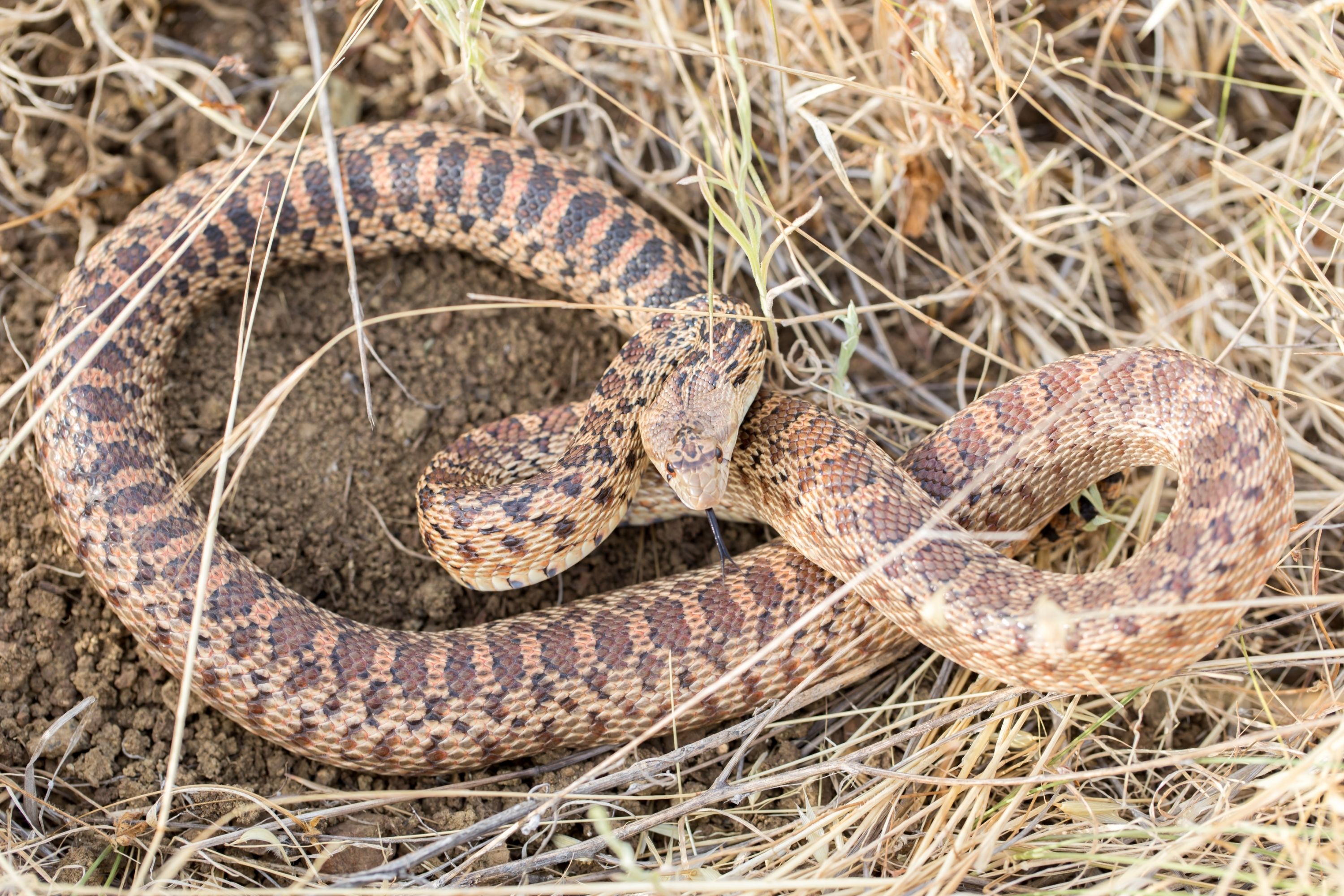Gopher snake
(Pituophis catenifer)

Description
Pituophis catenifer is a species of nonvenomous colubrid snake endemic to North America. Nine subspecies are currently recognized, including the nominotypical subspecies, Pituophis catenifer catenifer, described here. This snake is often mistaken for the prairie rattlesnake, but can be easily distinguished from a rattlesnake by the lack of black and white banding on its tail and by the shape of its head, which is narrower than a rattlesnake's. Adults are 36-84 in (91–213 cm) in length. Dorsally, they are yellowish or pale brown, with a series of large, dark brown or black blotches, and smaller, dark spots on the sides. Ventrally, they are yellowish, either uniform or with brown markings. The gopher snake has a unique defensive mechanism, in which it puffs up its body and curls itself into the classic strike pose of a rattlesnake. However, rather than delivering an open-mouthed strike, the gopher snake often strikes with a closed mouth, using its blunt nose to "warn off" possible predators. Additionally, gopher snakes vibrate their tails in a manner similar to rattlesnakes. One paper found that gopher snakes on islands lacking rattlesnakes vibrate their tails for shorter amounts of time than gopher snakes in mainland California, which is home to numerous rattlesnake species. This suggests that gopher snake tail vibration may in fact be rattlesnake mimicry since the behavior appears to be breaking down in areas without rattlesnakes, perhaps because predators on these islands have no reason to evolve to avoid tail-vibrating snakes (rattlesnakes are venomous, gopher snakes are not).
Taxonomic tree:







